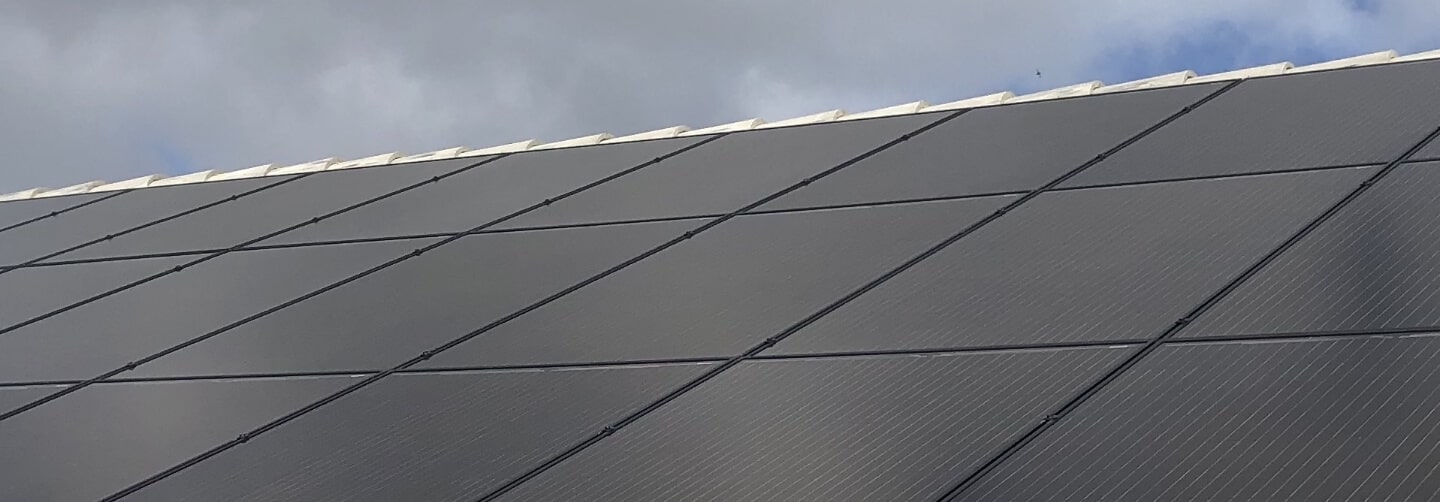How Does A Commercial Solar System Produce Electricity?

Commercial/industrial solar panel systems harness the sun’s energy to generate electricity. In basic terms, photovoltaic cells – a.k.a. solar cells – absorb sunlight and convert it into electrical current through a number of steps. This process is referred to as the photovoltaic effect. Subsequently, the electrical current is collected by wires and plates and transformed into usable electric energy which is then supplied to a facility.
To provide a better understanding of how a commercial/industrial solar system functions, we will discuss the steps involved in generating electricity.
Activation Through Sunlight
Solar panels consist of silicon cells enclosed in a casing made from glass with a specialized film. This is supported by wiring and a metal frame. Panels are installed in an ordered series to increase efficiency, either on large outdoor spaces or rooftops. During daylight hours, the solar cells absorb sunlight.
Electricity Generation by Solar Cells
Each solar cell contains a semiconductor wafer composed of two layers of silicon – one negatively charged and the other positively charged. This configuration establishes an electric field. When sunlight reaches the solar cells, it triggers a reaction that releases electrons within the atoms present in the semiconductor wafer. These electrons begin to move due to the electric field surrounding the wafer. This generates an electrical current.
Conversion of Electrical Energy
At this stage, your commercial solar system has successfully converted solar energy into electricity. But the electricity produced is in the form of direct current which cannot power factories or offices directly. To make it compatible, DC electricity needs to be converted into alternating current.
For this purpose, an inverter is employed to convert DC electricity to AC electricity. Depending on the specifications of your solar panel system, you can install a single inverter capable of handling the entire system. Some commercial solar panels may also incorporate micro-inverters connected to individual panels to facilitate the electricity conversion process.
The Use of Converted Electricity
Once the solar energy has been converted from DC to AC electricity, it is distributed within the property to power things like:
- Lights
- Machines
- Various other electrical devices
Solar energy operates in the same manner as electricity provided by your local electric utility company. So, there is no need to modify your machinery, appliances, or other electrical products to use solar energy.
Benefits of Meter Measures
In situations where your solar panels are unable to absorb energy from the sun due to excessive clouds or rain, you can still make use of surplus energy. When your electricity production exceeds the amount required to run your company, you can feed the excess electricity back into the utility company’s grid. As a result, the local electricity provider will give you credits in return. This arrangement ensures you can access electricity from the utility company when needed, without any concerns. The entire process is known as “net metering.” To avail yourself to this feature in the future, it’s advisable to install a small electric meter. This meter enables you to monitor the energy flow to and from your property.
Consult Solar Energy Solutions of America Experts for Your Commercial Buildings Solar Energy System
Solar energy generates an inexhaustible and environmentally friendly energy source, contributing to sustainable energy development. It’s no surprise that the use of solar energy in commercial buildings has seen exponential growth over the years. If you have questions regarding the installation of commercial solar panels, we can address all your inquiries.
If you’re a homeowner, consider the installation of residential solar panels as well. We’d be delighted to explain the advantages you can enjoy and provide a detailed explanation of the process.
